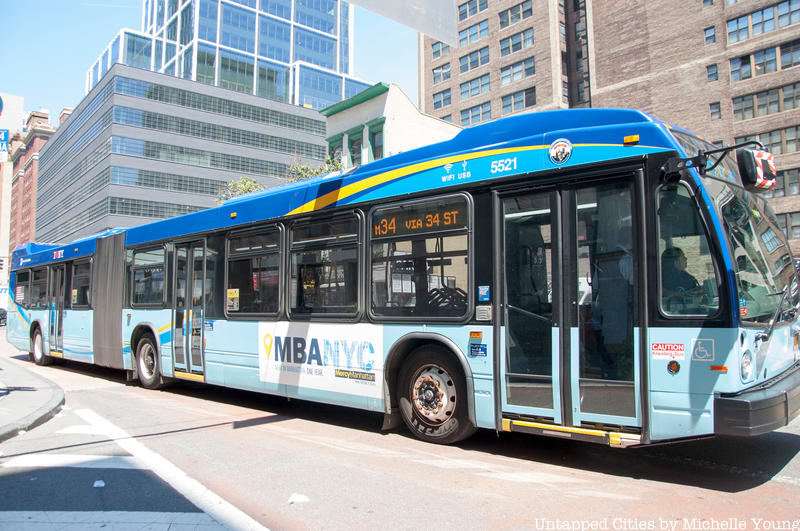
A document released this month by the Metropolitan Transit Authority details in 192 pages several plans for the system over the next 20 years. In a passing detail, pointed out by The New York Times, the MTA announced that “consideration should be given to trainsets with open gangways between cars, similar to the design of articulated buses.” The MTA is weighing possible benefits of converting the train cars to a fleet of articulated trains and the matter is currently under consideration. “Articulated” refers to the continuous aisle that would replace the conventional train cars, making it possible to walk to another section of the train that is less crowded. MTA has seen some success changing the bus fleet to articulated “Select” buses, and this report details their goal to revamp their subway system in a similar way.
The newer trains would have accordions that would resemble those on many NYC buses allowing them to still flex around the curves in underground tunnels, and also utilize many more doors along either side of the train. The report details, “This will maximize carrying capacity, and allow passenger to move to less-crowded areas of the train, balancing loading and unloading times at all doors.” The cars are also expected to be equipped with “features to minimize energy consumption, such as reduced weight.”
MTA Spokesman Adam Lisberg remarked that more doors would alleviate some of the “dwell time” of trains hanging out in the station due to crowding, allowing more trains to run. This would, in turn, reduce or perhaps eliminate the usual conductor announcements, “Please use all available doors!” or “There is a train directly behind this one!” He also cautioned that “with a 109-year old system, any major change required extensive review. If you make a bad call on changing equipment in a new subway car order the consequences can be pretty serious.”
The NYC Subway System used to have articulated trains back in 1924, as the New York Times reports:
In 1924, the Brooklyn-Manhattan Transit Corporation introduced plans for the “Triplex,” with a hinged, multisectioned body. It operated on the B, D, N, Q and R lines over a period of 40 years, representing “the height of transit modernity” at a moment when elevated lines often still featured wooden cars, according to the New York Transit Museum.
Some of the other notable proposed changes under consideration in the report include more “train like” buses with next onboard stop and route information and wider/more doors for boarding. You can read the full MTA report here.





